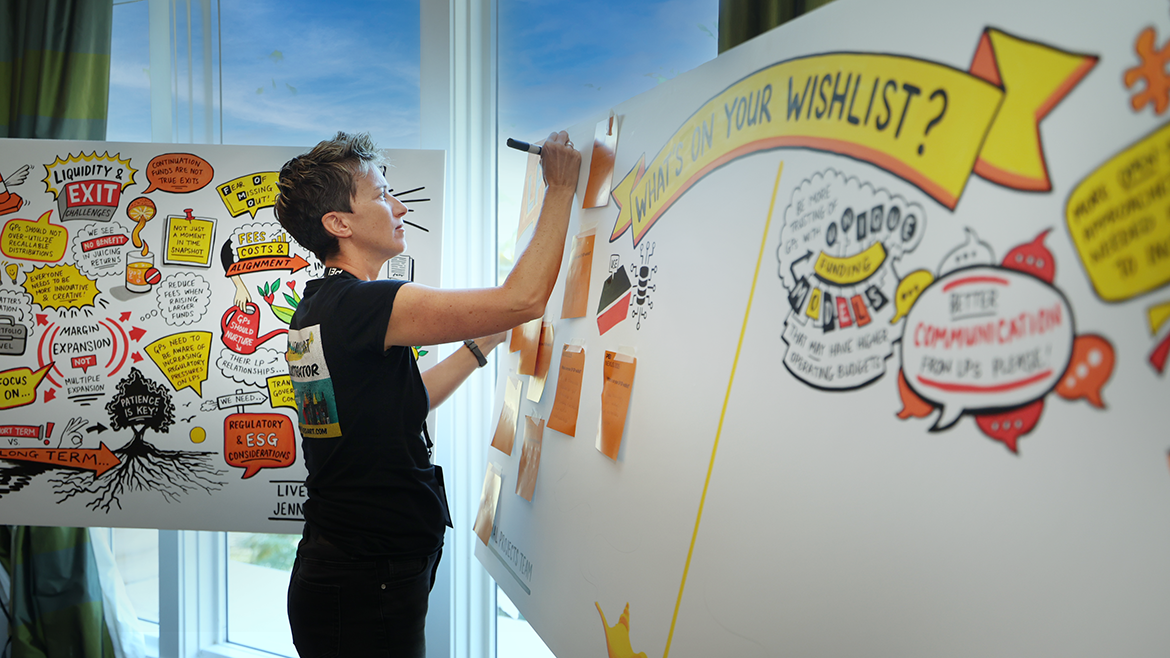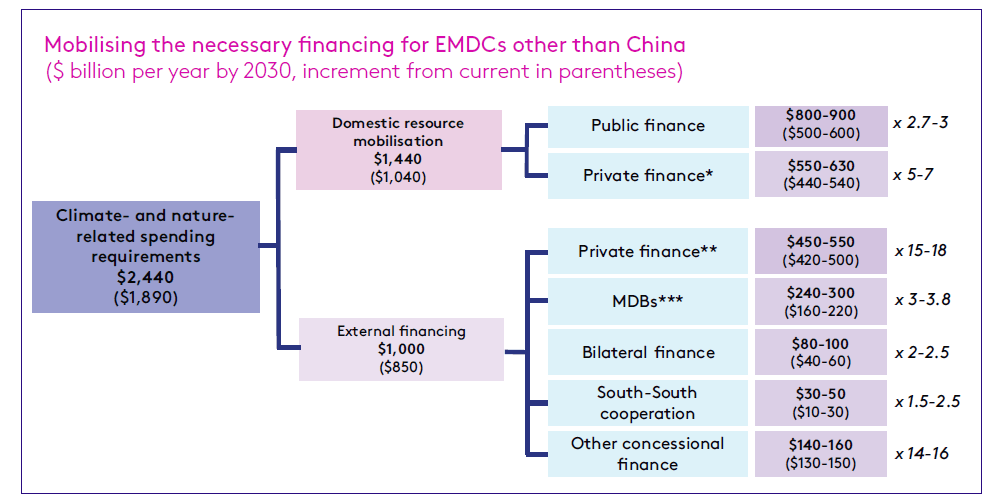The Outlook for Climate Finance in Private Markets
The Outlook for Climate Finance in Private Markets https://www.globalclimatefinanceaccelerator.com/wp-content/uploads/2025/03/climate_finance-1024x576.png 1024 576 Global Climate Finance Accelerator https://www.globalclimatefinanceaccelerator.com/wp-content/uploads/2025/03/climate_finance-1024x576.pngWith climate finance facing renewed scrutiny and skepticism, I appreciated the opportunity to discuss the evolving landscape of capital mobilization for climate solutions at PEI’s Nexus 2025 last week. The discussion with Karine Khatcherian-Pisant from Power Sustainable and PEI’s Toby Mitchenall underscored both the challenges and opportunities in financing the transition to a sustainable economy.
The Bad News:
- You can price in difficulty, but not uncertainty – Market volatility and policy unpredictability continue to deter investment in climate solutions.
- M&A will remain on hold in this volatile environment – Unstable economic conditions and shifting investor sentiment are delaying major acquisitions.
- Investment strategies (and pitches) must adapt – The era of cheap money is over, requiring businesses to refine their value propositions to attract capital.
The Good News:
- Dry powder in private equity is aging – With funds between 3-5 years old needing deployment, capital remains available for high-quality, value-add companies. An overallocation in cleantech led to investor caution after recent setbacks, combined with increasing investor scrutiny in general. A more selective investment approach is emerging, with capital allocation focused on scalable and commercially viable projects in the real economy.
- Private credit is forging ahead – Long-term, patient capital is stepping up, providing liquidity in both liquid and less liquid markets.
- GPs are exploring alternative deal structures – Investors are adapting to market volatility and liquidity constraints by developing creative financing mechanisms to mitigate emerging risks.
- Large LPs are diversifying exposure – LPs overallocated from the frothy PE market are now writing smaller checks to diversify commitments, creating opportunities for the kind of smaller, capital-intensive deals that are essential for scaling climate solutions.
- New capital sources are expanding access – The expansion of private wealth participation in PE is reshaping the investment landscape, increasing accessibility for a wider range of investors, many of whom are dedicated to combatting climate change. As platforms democratize access, private wealth is expected to play a pivotal role in shaping the trajectory of the private equity sector.
- Employee ownership transitions are gaining traction – Aligned with PE’s broader efforts to democratize capital access and tap into new sources of private wealth, GPs are actively exploring employee ownership models, which promotes wealth distribution by enabling employees to build equity and share in long-term financial success.
Climate Finance: Trends to Watch
- Infrastructure finance will play a crucial role in scaling climate tech, with offtake agreements, performance guarantees, and corporate investments becoming essential mechanisms for de-risking projects and securing long-term viability.
- Insurtech offers specialized insurance products to transfer the risk of increasing frequency and severity of climate-related events, such as wildfires, floods, and hurricanes. New market entrants offer coverage to homes in areas prone to natural disasters using simulation software, insurance solutions using sensor technology to protect temperature-sensitive shipments, and microinsurance to smallholder farmers in emerging markets that leverages advanced data and AI models to keep premiums low.
- Innovation in reinsurance such as catastrophe bonds, weather derivatives, and parametric insurance leverages capital markets to distribute climate risks beyond traditional insurers. These risk transfer instruments offer institutional investors the opportunity to earn competitive returns that are largely uncorrelated with traditional financial markets, providing portfolio diversification while absorbing climate-related risks.
Despite current headwinds, private capital is adapting to new market conditions, and investors continue to seek innovative pathways to fund climate solutions. By refining investment strategies and integrating financial innovations, the climate finance sector can unlock the capital required to drive transformational change and future-proof the global economy.
Susan McGeachie is CEO of the Global Climate Finance Accelerator, which convenes partnerships across business, finance, government and academia on strategies, policies, procedures, and tools to finance the deployment of technically viable climate solutions.













 Helen is the Executive Director at Student Energy, the world’s largest youth-led organization mobilizing 100,000 young people in 130 countries for a just, sustainable and equitable energy transition. Helen is a Forbes 30 Under 30 lister, Corporate Knights 30 Under 30, and a recognized young clean energy and intergenerational equity advocate.
Helen is the Executive Director at Student Energy, the world’s largest youth-led organization mobilizing 100,000 young people in 130 countries for a just, sustainable and equitable energy transition. Helen is a Forbes 30 Under 30 lister, Corporate Knights 30 Under 30, and a recognized young clean energy and intergenerational equity advocate.

